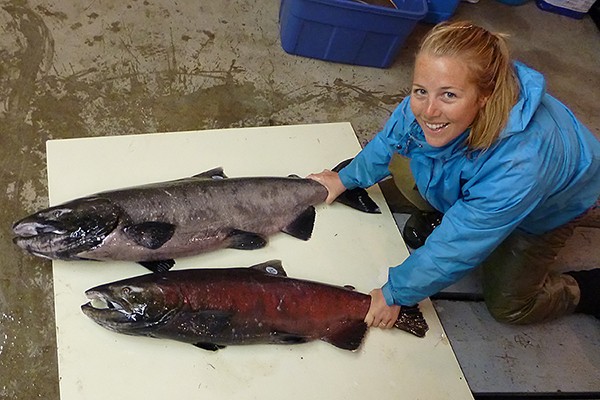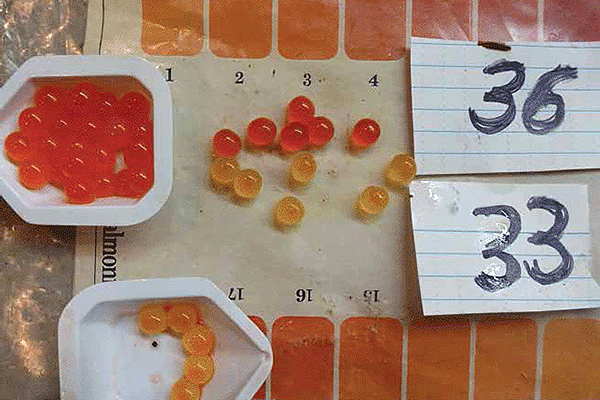 Doctoral student Sarah Lehnert displays specimens of white and red Chinook salmon.
Doctoral student Sarah Lehnert displays specimens of white and red Chinook salmon.
Although white Chinook salmon don’t have the characteristic red colour that people know and love in Pacific salmon, they are still impressive in a different way, says Sarah Lehnert.
A doctoral student of biology at the Great Lakes Institute for Environmental Research, she had her work on the colour variation in this species featured in the July edition of Fisheries magazine, the organ of the American Fisheries Society.
About 10 percent of the fish are white, determined by genetic differences that affect how they process carotenoids, powerful antioxidants that naturally contain red pigments, from such dietary sources as krill and squid. The colour manifests in their flesh, eggs and external appearance during spawning season.
“Why salmon evolved to use and deposit carotenoid pigments is still a mystery,” Lehnert says. “My Ph.D. dissertation is providing answers to a number of questions to help solve this mystery.”
The issue is important to the aquaculture industry, because consumers associate bright colour with the quality of a salmon fillet. But Lehnert says it is also important to understanding the fish’s evolution.
Knowing that carotenoids are often correlated with immune functions, she compared genes governing them in each type and found significant differences.
“If white Chinook are in fact at a disadvantage because they lack carotenoids, they may be able to compensate by having more diverse genes that allow them to deal with a wider range of pathogens,” says Lehnert. “This hypothesis could explain how white Chinook salmon can overcome the expected carotenoid-immunity handicap and be able to coexist with red salmon in nature.”
See the photo and associated interview in Fisheries magazine.

Unfertilized eggs of Chinook salmon exhibit differences in colour between red and white individuals.
